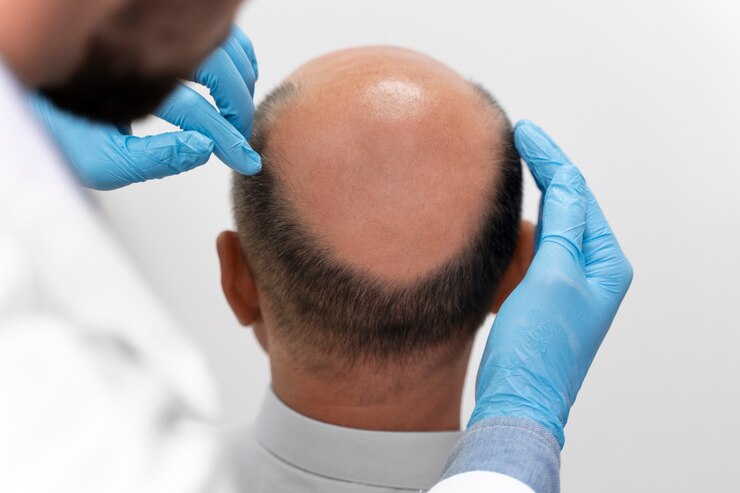Hair loss can significantly impact confidence and self-esteem, prompting many individuals to explore various hair restoration options. One of the most popular and effective methods today is the FUE Hair Transplant in Abu Dhabi. This procedure offers a minimally invasive approach to regaining natural-looking hair, but many prospective patients wonder about its aftermath—specifically, whether it leaves any visible scars. Understanding the nature of FUE and its effects on the scalp is essential for making an informed decision about your hair restoration journey.
What Is an FUE Hair Transplant?
Overview of the Procedure
FUE, or Follicular Unit Extraction, is a modern hair transplant technique that involves extracting individual hair follicles from a donor area and implanting them into areas experiencing hair thinning or baldness. Unlike traditional methods, FUE does not involve removing a strip of scalp tissue; instead, it utilizes tiny punches to harvest follicles, making the process less invasive.
Advantages of FUE
- Minimal invasiveness: Smaller incisions lead to faster recovery times.
- Natural results: The transplanted hair blends seamlessly with existing hair.
- Reduced discomfort: Less postoperative pain and swelling.
- Versatility: Suitable for various hair types and degrees of hair loss.
Does FUE Hair Transplant Leave Any Visible Scars?
Nature of the Scars in FUE
One of the most common concerns among individuals considering FUE is whether the procedure leaves visible scars. Because FUE involves the extraction of individual follicles using small punches typically less than 1mm in diameter, the resulting scars are tiny and usually well-hidden within the scalp’s natural hair growth.
Visibility and Healing
- Tiny, discreet scars: The small size of the punch marks generally results in scars that are barely noticeable, especially when hair is grown out.
- Healing process: These micro-wounds heal quickly, often within a few days, and the scars tend to fade over time.
- Hair density and scarring: High-density hair transplants may cause more trauma, but experienced practitioners ensure that the scarring remains minimal.
Factors Influencing Scar Visibility
While FUE is designed to minimize scarring, certain factors can influence how visible scars might appear:
- Hair color and skin tone: Contrasts can make scars more apparent; darker scars may become more noticeable against lighter skin.
- Hair growth pattern: Hair growing over the scar can effectively conceal it.
- Postoperative care: Proper wound care accelerates healing and reduces scarring.
- Practitioner expertise: Skilled surgeons optimize follicle extraction to reduce trauma and scarring.
Long-Term Perspective
Over time, the tiny scars from FUE tend to become less noticeable, blending in with the surrounding scalp hair. For most patients, these scars are virtually invisible, especially when sufficient hair density is maintained or restored.
Comparing FUE Scarring to Other Techniques
Follicular Unit Transplantation (FUT)
FUT, or strip harvesting, involves removing a strip of scalp tissue, which leaves a linear scar. This scar can be visible if hair is cut very short and may require more extensive postoperative care.
Why FUE Is Favored
- No linear scar: The absence of a large scar makes FUE more appealing to those wishing to keep their hair short.
- Less postoperative discomfort: Smaller wounds mean less pain and quicker recovery.
- Fewer restrictions: Patients can typically resume normal activities sooner.
The Role of Skilled Practitioners
Importance of Experience
The visibility of scars after an FUE procedure heavily depends on the surgeon’s skill and technique. Experienced surgeons use precision tools and methods that optimize follicle extraction while minimizing trauma to the scalp. They also plan the procedure carefully to distribute the grafts evenly, reducing the likelihood of noticeable scarring.
Techniques to Minimize Scarring
- Optimal punch size and depth: Using the appropriate punch to prevent excessive skin damage.
- Strategic extraction sites: Planning donor areas to distribute scars evenly.
- Postoperative care: Ensuring proper wound healing and scalp care.
Managing Expectations and Postoperative Care
Scarring and Hair Growth
Proper postoperative care is crucial in ensuring minimal scarring and optimal healing. Gentle scalp handling, avoiding scratching or aggressive washing, and following surgeon recommendations promote faster healing and less conspicuous scarring.
Camouflaging Scars
In cases where scars might be slightly visible, hair styling techniques, such as keeping hair slightly longer or employing specific haircuts, can effectively conceal any residual marks.
Conclusion
The FUE Hair Transplant Abu Dhabi is renowned for its minimally invasive nature and the remarkable ability to produce natural-looking results with minimal visible scarring. While tiny scars do form as a result of the follicle extraction process, they are generally small, discreet, and tend to fade over time, especially when performed by an experienced practitioner. For individuals seeking a permanent solution to hair loss with minimal aesthetic impact, FUE offers an excellent option that balances effectiveness with subtlety.
